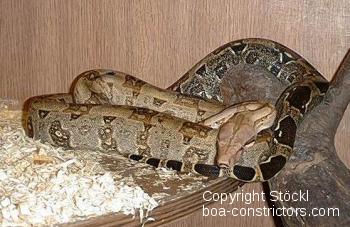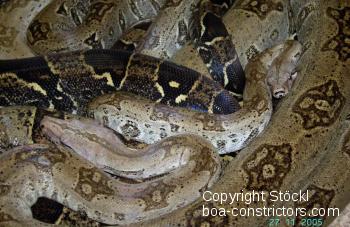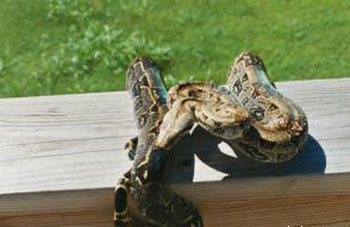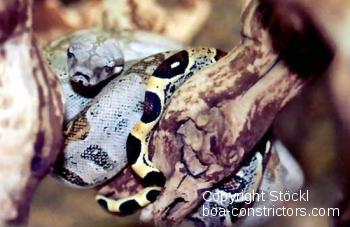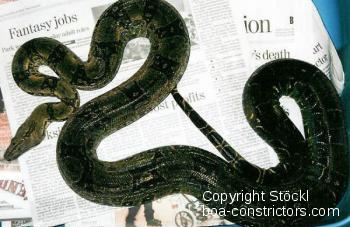Boa constrictor orophias
Distribution area Island St. Lucia (Lesser Antilles)
Size up to 10ft
Particularity often very aggressive
Boa constrictor orophias information | St. Lucia Boa information | size of Boa c. orophias | Boa c. orophias breeders | Boa c. orophias offspring | St. Lucia Boas for sale | information on St. Lucia Boas | true Boa c. orophias
Boa c. orophias - St. Lucia Boa
The Caribbean island state of St. Lucia was a British colony until 1979. The lush rainforest vegetation which once covered large parts of this mountainous volcanic island has been cut down almost completely today.
The tropical humid climate of St. Lucia is alleviated by the northeast trade winds. The seasonal rains last from May to September.
The temperatures vary only slightly in the course of the year, being 28 to 33° C (82 to 91° F) during the day.
In the northern part of the island, erosion causes serious problems. Agricultural chemicals, the production of unfiltered sewage, and improper disposal and deposition of waste matter are additional threats to the natural environment of the island.
As it stands, it is not astonishing that the St. Lucia population of Boa c. orophias is extremely endangered. The local people’s fear of snakes and their conviction that tourism would be better off without them have not exactly contributed to its conservation.
St. Lucia boas have pale to medium brown backs and gray flanks. The dark brown saddle patches are comparatively large and usually separated from each other. Paler areas frequently occur within these markings. In the last third of the body, the coloration of St. Lucia boas turns duller. Under natural light, this area shows a metallic bluish black gleam.
Boa c. orophias is a slender, muscular snake with an elongated head. Most animals of this subspecies are regarded as fairly irritable.
According to D. LAZELL, this subspecies occurs on the Caribbean island of St. Kitts as well (Bull. Mus. Comp. Zool., Harvard Univ., 132 (3): 245-273, December, 1964), However, this report is generally questioned.
In 1993, the first St. Lucian boas became available to German herpetoculturists when a Munich Boa constrictor lover purchased three adult pairs in the Netherlands. In the summer of 1995, these snakes produced their first offspring.
This single breeding accomplishment did not stand for long, however, as a breeder from Lower Bavaria (who had received several pairs of this subspecies shortly before) was equally successful.
In 1995, Germany thus witnessed the simultaneous birth of two clutches of Boa c. orophias. The breeding results achieved during the following year were excellent, too.
As the St. Lucia boa is not exactly an attractive subspecies, the market was saturated in no time, and the breeders had difficulty finding potential buyers for their animals. Consequently, the interest of German herpetoculturists in Boa c. orophias verged on zero by 1998.
However, an inventory made in 2007 demonstrates the speed at which things may change: The St. Lucia boa ranks among the rarest subspecies of Boa constrictor, and it has become a rarity in Germany once again. One wonders where all the snakes bred during the 1990s have gone . . . We suppose that most of them have perished even though Boa c. orophias is actually a very hardy subspecies. It is also possible that many of these animals have fallen into the hands of pet keepers and are away from the collections of boa breeders.

